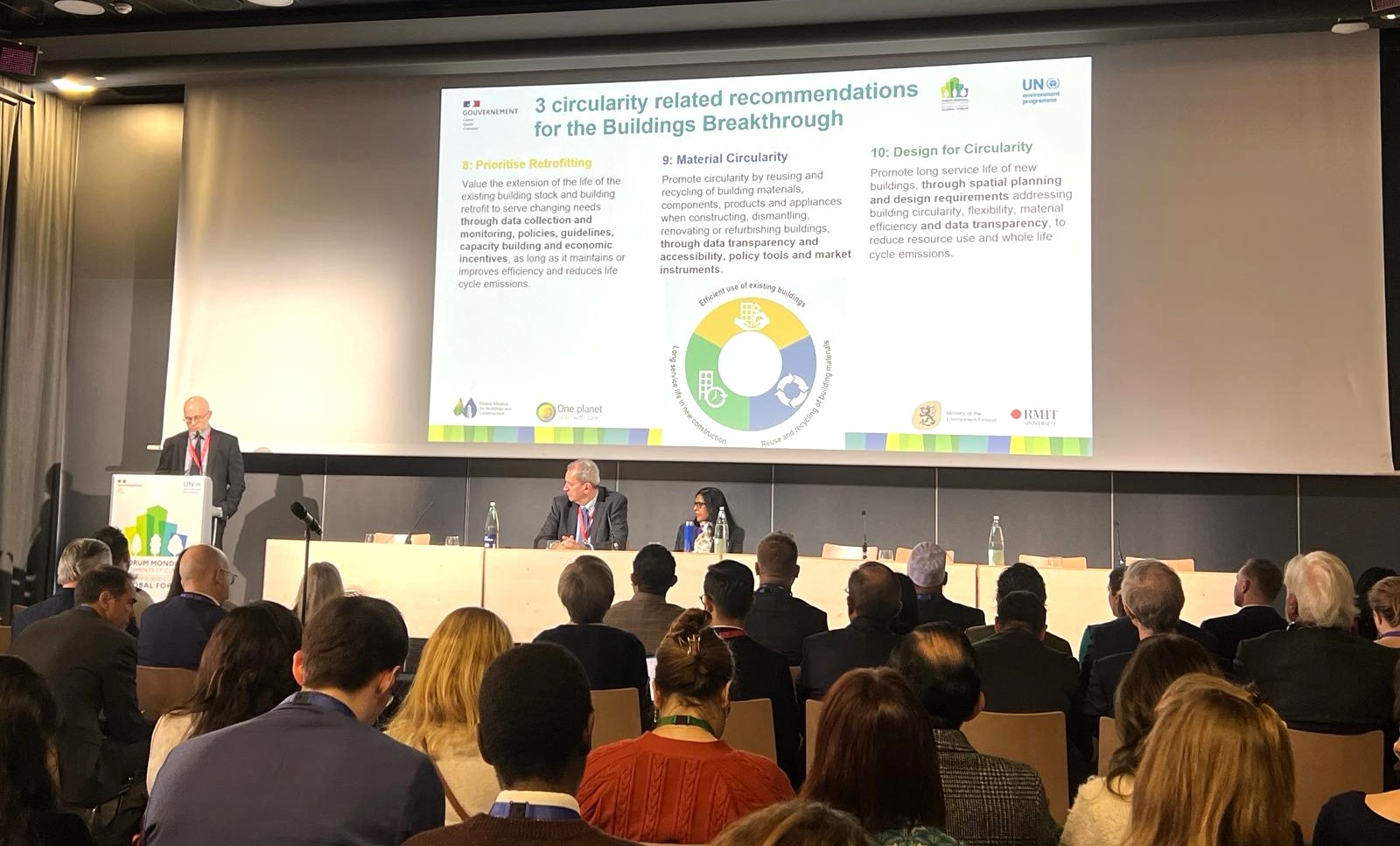=Khoadi-//Hôas Conservancy Receives Global First Sustainable Tourism Award for Namibia
Image

In a global first for Namibia, =Khoadi-//Hôas Conservancy has been recognised as one of the world’s Top 100 sustainable destinations! The 4th annual Sustainable Destinations Global Top 100 award winners were announced by Green Destinations – a destination certification body accredited by the Global Sustainable Tourism Council (GSTC). This year's theme was "Tourism to Benefit Local Communities" and showcases Namibia's innovative community-led approach to natural resource management.
This innovative, community-based approach to natural resource management in Namibia is based on the principle that local people are the best custodians of indigenous natural resources and their sustainable management, resulting in over 45% of Namibia being under some form of conservation management.
=Khoadi-//Hôas was one of the first of four such conservancies to be gazetted in Namibia in 1998 and operates the 100% community-owned Grootberg Lodge and Hoada Campsite in partnership with Journey’s Namibia. Low-impact, guided activities on offer from these off-grid operations include opportunities to experience the unique, locally-adapted wildlife, engage with local people to learn about their ways of life, and to take in the expansive, iconic landscapes for which Namibia is famed. Both Grootberg Lodge and Hoada Campsite have received the highest accolade – 5 Desert Flowers – from Namibia’s sustainable tourism certification body, Eco Awards Namibia, adding further merit to the destination’s global top 100 recognition.
Ms Maxi Louis, Director of the Namibian Association for Community-based Natural Resource Management Support Organisations (NACSO), was thrilled with the recognition, saying that, “The successful achievements of Namibia’s conservancies in wildlife conservation and community beneficiation are deserving of global recognition. We offer an innovative approach where people are the focal point of finding and implementing solutions for sustainable development. We are proud of the =Khoadi-//Hôas and the lessons it may offer to other destinations.”
Journeys Namibia Operations Director, Mr Dominic Du Raan, echoed her excitement at the global recognition: “Our partnership with the community of the =Khoadi-//Hôas is a great source of pride for us – the tourism experience on offer could not be achieved alone, but is a result of commitment to working together for the benefit of local people through the successful operation of their tourism businesses. We look forward to many more years of working together to host visitors from around the world.”
The CBNRM Programme has introduced innovative conservation management
methodologies over the years, including the Event Book Monitoring System whereby
each conservancy decides what resources it needs to monitor and carries out all data
collection. This includes the following for ≠Khoadi-//Hôas conservancy: counting wildlife and other data vital to conservation, e.g. vegetation counts, information about
conservancy governance, and data used to calculate the improvement in livelihoods
through conservation. These can be referenced on: http://www.nacso.org.na/resources
The drop down list will give you the option to select ≠Khoadi-//Hôas conservancy where
detailed game count data and other natural resource information can be found.
You can also access the summary report via the NACSO website: http://www.nacso.org.na/conservancies/khoadi-hoas
Aggregated data regarding natural and cultural resource inventories, livelihood impacts, tourism
activities, etc are published here: http://www.nacso.org.na/resources/state-ofcommunity-
conservation.
The most recently approved audit report for the state of community conservation in Namibia is for 2016. The map uploaded below is also available at the conservancy office for visitors to explore the natural and cultural sites of the area. It is a fold-out map in the centre of the ≠Khoadi-//Hôas conservancy brochure.
Non-wildlife populations densities are also available on the NACSO website. Communal areas of Namibia - including conservancies and communal forests - cover
approximately 40% of the country. They have been set aside for livelihood use and
benefit by and for local communities and are based on the premise that local people are
the best custodians of indigenous resources and their sustainable management.
≠Khoadi-//Hôas Conservancy - the first of four conservancies proclaimed in 1998 - is in
northwestern Namibia and has developed tourism experiences in a way that enable a
range of travellers to enjoy the area's vast landscapes, which is the traditional home of
the Damara people and their ways of living, its cultural heritage, and the natural
wonders found there. Grootberg Lodge is a landmark in Namibia for the tourism industry
as it is the first middle-market establishment in the country that is 100% owned by the
conservancy. Its 16 units - all offgrid and built out of natural rock and thatch - are
perched on top of the Etendeka Plateau from where guests will be hosted by staff from
the community. Visitors can explore this vast surrounding wilderness either by foot, by
solar bicycle, or car and experience encounters with the inhabitants of this remote
biosphere. Hoada Campsite is a fully staffed campsite nestled among the beautiful
granite hills and mopani trees of the area. Each site was positioned to minimise
disturbance to the existing vegetation and is equipped with kitchen and braai / BBQ
facilities. To add an eco-friendly touch, the hot water system works in combination with
the braai area where the same fire used for cooking your food heats up the water for
your shower, minimising the use of wood! Both Grootberg and Hoada have had their
responsible tourism commitments verified by the country's sustainable tourism
certification scheme, Eco Awards Namibia, from whom both obtained the highest
possible accolade of 5 Desert Flowers. The conservancy also offers a "side track" option
for independent explorers to discover a number of scenic drives and viewpoints, hike to
the Fig Tree Waterhole or the longer "Game Count Route", and learn about local fauna
and flora including the beautiful leadwood trees. An information brochure and fold-out
map can be obtained at the conservancy office.

